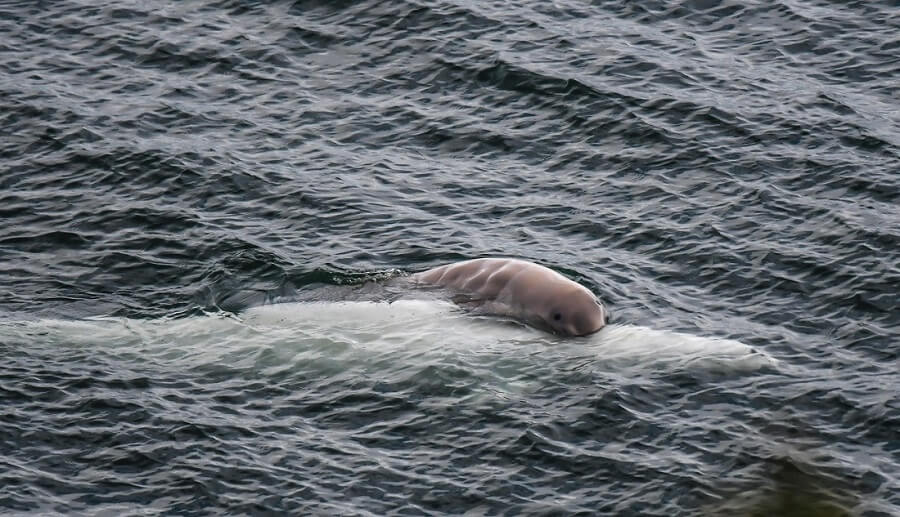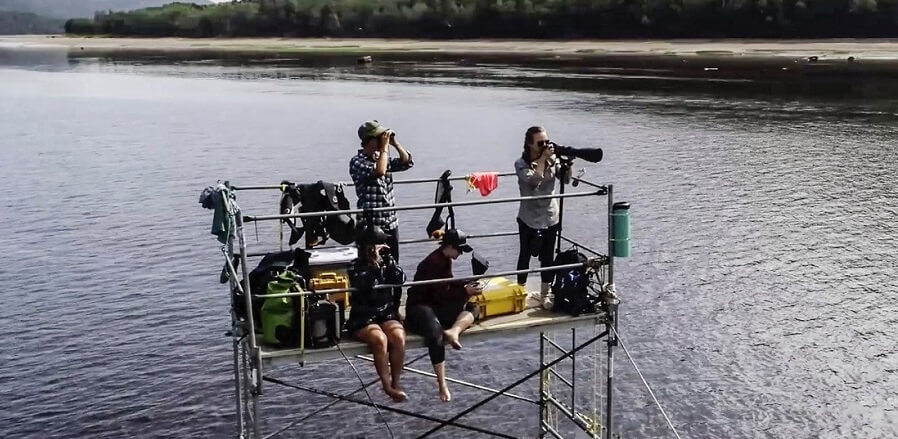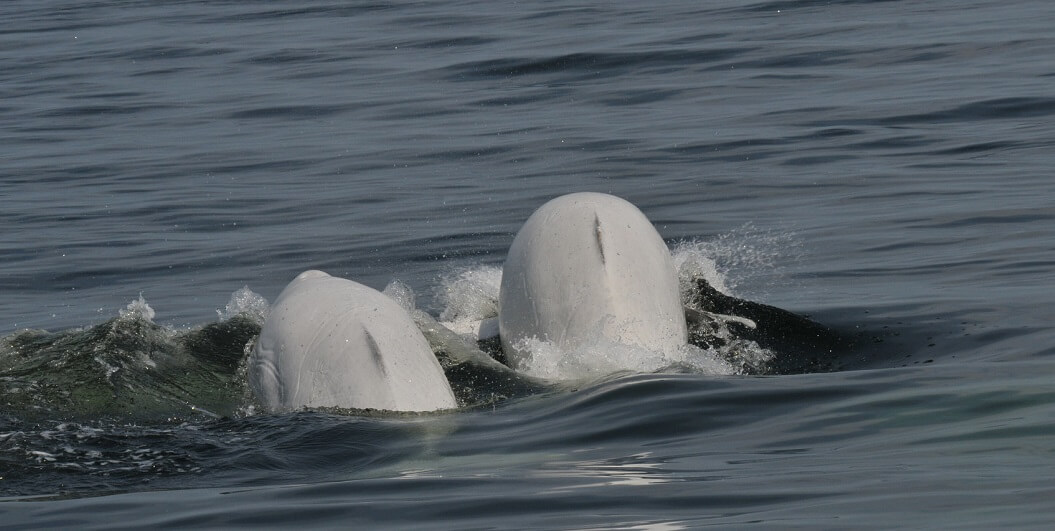Biologist Valeria Vergara has always assumed that newborn belugas produce very soft vocalizations, making them particularly vulnerable to underwater noise. Thanks to her project “Mom, can you hear me?,” the results of which were published in the journal Polar Research, we now know more about the severity of noise pollution impacts on the communication capabilities of the St. Lawrence beluga.
Data on maritime traffic noise were collected using a hydrophone submerged in the Saguenay, namely at the entrance to Baie Sainte-Marguerite, a sector of the Marine Park frequented mainly by females and young. According to analyses conducted by the researcher and her team, calls made by newborns in the presence of boats appear to be audible only up to 170 metres, which is 53% less than their normal range. The vocalizations of adults are also masked by ambient noise: in the presence of motor boats, the range of their sounds decreases by 57%, from 6.7 km to 2.9 km.
The study focused on one specific type of vocalization, the contact call, which is essential for communication between mothers and their calves as well as group cohesion. “I wasn’t expecting the impact of noise to be so significant!” exclaims Vergara.
All by one’s lonesome
“Newborn belugas tend not to stray too far from their mothers,” says the researcher. “But if there is any disturbance, they may be unwittingly separated.” In fact, if they sense danger – due to an unexpected noise, for example – belugas can start swimming faster or suddenly change direction. A newborn, which is still an awkward swimmer, may not be able to keep up. “A calf can find itself more than 170 metres away very quickly” points out the biologist. Separated from the rest of its pod, the young beluga could therefore have a very hard time making itself heard by its mother if boat-related noise is drowning out its calls. “The waters of the Saguenay are very murky,” continues the scientist.
Belugas cannot see one another, hence the importance of sound. Belugas use sound waves not only to stay in touch and communicate, but also to find food through a technique called echolocation.
Belugas’ sensitivity to noise is well documented. In fact, acoustic disturbance is considered one of the three main threats to the recovery of the St. Lawrence beluga population.
Sophisticated calls
For a trained ear, contact calls are easy to recognize. “It sounds like a creaky, rusty door,” says the beluga communication expert. For so-called “complex” contact calls, which are produced only by adults and juveniles, a whistling sound is superimposed on the squeaking. This more melodic part of the contact call tends to transmit farther than other components of the contact call.
The contact calls encompass a very wide range of frequencies, and while some frequencies travel more easily, others are more easily masked by ambient noise. In the present study, scientists estimated the range of a beluga contact call based on the condition that at least a small portion of these frequencies would still be detectable by another beluga. In other words, the maximum estimated communication range of a contact call is not achieved by all the original frequencies. Devoid of its complexity, is the call still comprehensible to other belugas? Impossible to say. Indeed, scientists do not know which frequencies are essential for the message to be meaningful. If the full range of frequencies is needed, then belugas’ ability to communicate would be greatly compromised.
In any case, limiting noise disturbance can help ensure that belugas are able to communicate effectively. It is for this reason that Baie Sainte-Marguerite is closed to watercraft during the summer months. Although this measure does not completely eliminate noise pollution in the belugas’ living space, the absence of boats in the bay might help limit the risk of females becoming separated from their young.








